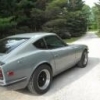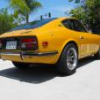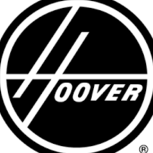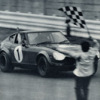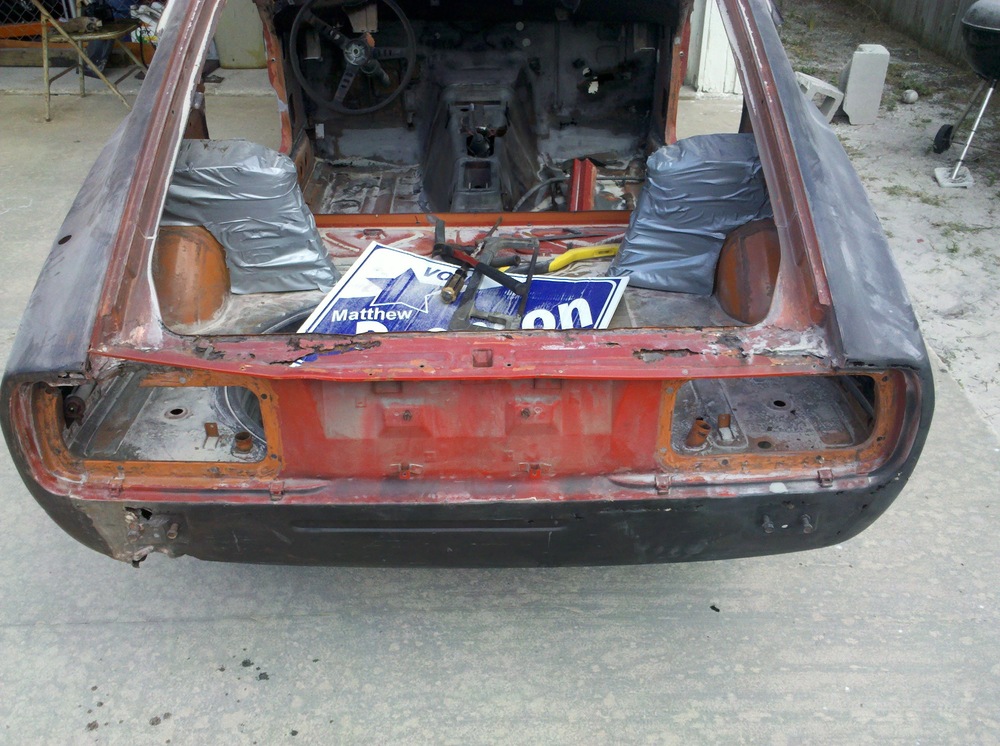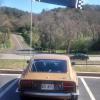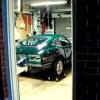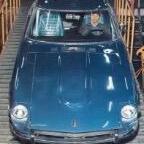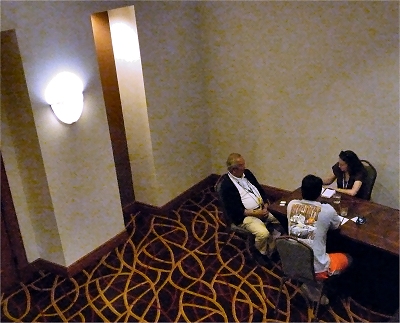The Original Nissan Z Car Was Never Supposed To Happen
Interview by: Stef Schrader
Former Nissan designer Yoshihiko Matsuo is the hero we need right now: a true believer in designing fun cars for the common man. His legendary 240Z went on to spawn an entire lineage of Datsun and Nissan Z cars. Yet Matsuo’s bosses at Nissan corporate thought he was insane for even suggesting a car like the first Z. Here’s how he had to fight to make it happen. [Full disclosure: Nissan wanted us to check out their longest-running Z car enthusiast show, ZCON, so they gave us a couple of passes and bought us lunch and dinner for the day. There, Matsuo told us the story of how he got involved in cars and how the 240Z came to be through an interpreter.]The original 240Z entered production in 1969 and was built through 1973 and on to 1978 if you count the bigger-engined and slightly redone 260Z and 280Z models. It not only drastically improved Americans’ perception of Japanese cars, but it has been beloved by enthusiasts ever since.
To this day, Matsuo said his ideal sports car looks much like his original Z car: a small, lightweight chassis with a smaller but adequate engine. He’s still a fan of inline six-cylinders, as they’re easy to turbocharge to if you feel the car lacks power. Upgrades could include dual-clutch transmissions (though never a CVT) or even hybrid-assisted power, but the base, manual model of the car should remain simple, affordable and light: the same formula he used to create the 240Z.
Yoshihiko Matsuo (right) and interpreter (left). Photo credit: Bradley
And he says he’s not a fan of Nissan’s current direction, as even the 370Z is now heavier, more complicated and priced just out of reach for the masses. His middle-class neighborhood used to be full of Nissan cars like Laurels, Bluebirds and Cedrics, but now many of his neighbors buy German vehicles as Nissans have become more expensive, as he explained through a translator.
Matsuo’s tendency to question and challenge his corporate higher-ups put him at odds with the highly structured, respect-your-authorities business culture of Japan.
Fortunately, it made him a friend in the legendary head of Nissan in the United States, Yutaka Katayama, who saw great potential in Matsuo’s clever outlaw design of the 240Z. This is the story of that car and the designer who saw it through.
Nissan sportscars at ZCON. Photo credit: Kurt Bradley
It All Started With A Pen
Matsuo’s interest in design started in middle school, when he got his hands on a Parker 51 fountain pen. Japan was still rebuilding itself after World War II, making simple, utilitarian objects, whereas countries like the USA had the resources to put tons of effort into a simple pen design, Matsuo explained through an interpreter. America was dreamlike and exciting to Matsuo, who saw American items like cars and pens admired in his own country.
To catch up and become a first-class nation, Matsuo believed the Japanese would have to take more pride in their design, and make enjoyable everyday objects.
Nissan used to badge their exports as Datsuns, including the models Matsuo worked on. Photo credit: Kurt Bradley
Asking The Right Questions
The Japanese automotive industry was growing in much the same way as everything else at the time—often through copying existing foreign designs. Nissan got its start, for example, building licensed car designs from British automaker Austin.
But the Japanese auto industry as a whole was quickly growing and now selling cars around the world. Matsuo recognized that at a young age, so he went into cars.Nissan didn’t even have a design department in its earliest days. One of Nissan’s early attempts to make good design a priority was to let Pininfarina design the 1960s 411 Bluebird. But that didn’t resonate with Matsuo. Much to his manager’s dismay, he pointed it out. Matsuo explained, through his interpreter:
For the second-generation Bluebird, they contracted Pininfarina to design the 411. When the design blueprint came to [Matsuo], he looked at it and went “I don’t think so.” Then his boss, who’s a big guy said, “What are you talking about? This is a world-class artist...and who are you to criticize the model design of a world-class artist?”Turns out, Matsuo was the person who knew what he was talking about. When the 411 Bluebird went to market, it didn’t sell well. Nissan’s corporate leadership turned to Matsuo—since he criticized it, he would be in charge of fixing it. Matsuo’s biggest beef was with the rear end of the Bluebird. It was angled downward like many of Pininfarina’s contemporary designs for Peugeot. This made the trunk smaller, less usable and less attractive. “It looked more like somebody squatting on the toilet,” Matsuo said of the 411's rear. Matsuo angled it up as an important part of his fix for the refreshed 411. But he didn’t think that was enough, so he took a cue from European cars to add a circular speedometer, bucket seats and a floor shifter—much more like a sports car. The Bluebird also received a much-needed bump in power from the addition of twin carburetors. While Matsuo’s bosses thought these additional changes went beyond his role as a designer, the engineering department approved of all of them. This model became the Bluebird SSS (for Super Sports Sedan) and it was a great commercial success despite selling for around twice the price of the original Bluebird.
A 1966 Bluebird 1300SS, after Matsuo fixed the “squatting” rear design. Photo credit: Nissan
Nissan’s Strange ‘Reward’
To reward Matsuo for fixing the Bluebird’s slumping sales, Nissan named him the head of design over the Datsun Roadster at a Nissan subsidiary called Nissan Shatai. Nissan Shatai’s main function was producing auto bodies, but it also handled Nissan’s sports car at the time.
The design department at Nissan Shatai consisted of two people at the time, one of whom was Matsuo. The biggest problem was that the subsidiary had nothing new planned for Matsuo to get to work on. The Roadster itself was already in production. Matsuo described this so-called reward as being named “chief by name only.”
Worse yet, the way Nissan Shatai made cars was woefully outdated. When Matsuo got there, workers were still pushing cars around by hand instead of moving them along on a modern assembly line.
Matsuo had a few thoughts on why sales of the Datsun Roadster had slowed. It was one of many roadsters in a market crowded by cars like the Triumph TR6 and Fiat 124 Spider. The pretty little Datsun drop-top wasn’t suited for foul weather, and wasn’t ideal for carrying luggage on longer trips.
What they needed instead was a low-cost grand touring (or ‘GT’) car—one with more space and a solid roof—the likes of which just didn’t exist at the time. Sure, there were Jaguar E-Types, Porsche 911s and Ferraris, but they were unaffordable for most people. British automakers were starting to make enclosed roadsters like the little MGB GT and Triumph GT6, but Matsuo envisioned a step up from that. Matsuo wanted a GT sports car for the common man.
A 240Z race car at ZCON. Photo credit: Kurt Bradley
Doing Things Backwards
Normally, designers at Japanese car companies don’t propose new cars, Matsuo explained. It’s simply not their place in the wider hierarchy of how things work. New models usually come from a corporate planner, who eventually works a request down to a design department.
Because the Z car didn’t follow the usual processes for getting a new model approved, Matsuo had to personally chase down the work on the 240Z to see it through production himself. It was a design that was never asked for by corporate that completely originated from Matsuo’s design department, so none of Nissan’s usual processes seemed to apply.
But the higher-ups gave Matsuo the unexpected leeway to design what he wanted when they “promoted” him to Nissan Shatai: free time. Matsuo used the privilege of working on next to nothing to design what he wanted: a GT car aimed at the U.S. market, with enough luggage space to travel across the country and a fixed roof usable in all kinds of weather.
“As [Matsuo] goes back and thinks about this now, he is amazed that they were able to do this much without the knowing how many they were actually going to sell, or the budget that was [to be] allocated,” Matsuo’s interpreter explained.
Matsuo also had to make this new GT car affordable, so they got to work modernizing Nissan Shatai’s work processes. He wanted to produce at least 3,000 cars a month, with big ideas of going after the American market at a time when many Americans felt Japanese cars were tiny, cheaply built and underpowered. Naturally, the higher-ups at Nissan corporate thought he was insane.
Many Possibilities For One Car
The first “Model A” prototype sketch of what would eventually become the 240Z was a fastback, but it had slightly different proportions than the final product. Japan taxes cars by physical size and engine displacement. Cars less than five and a half feet wide with engines smaller than two liters fit into the lowest class for taxation. Taxes double with the next size up, so this proto-Z was originally designed to be smaller, with a four-cylinder engine to fit the regulations.
The car, of course, was ultimately deemed the “Z,” however—named such for a naval flag that means “Attack!” or “Go!”
Matsuo explains the early race car Z sketch, which was penned by his assistant Akio Yoshida. Photo credit: Kurt Bradley
It’s fitting, as Matsuo also wanted to make a car that could win races. Not only was another early design sketch of the Z a race car, but the car’s interior design reflected the Z car’s need to go racing. Vital controls and chokes were placed within reach of a driver in a racing harness. Matsuo pushed for some controls to be integrated into the stalks behind the wheel for easier reach as well. That’s standard now, but was revolutionary at the time.
The Japanese 240Z even came with a stopwatch for lap times on the dashboard, long before Porsche integrated one into their cars.
Clay models were made, and Matsuo’s team even did aerodynamics testing, albeit with quarter-size scale models. Nissan didn’t have a full-size wind tunnel at the time. Matsuo wanted the front windshield to be curved more for less wind resistance, but was ultimately shot down by Nissan’s glass manufacturer.
To meet the goal of selling at least 3,000 cars a month, his department also penned other versions that could help the car appeal to different needs, including a 2+2 prototype with a leather top and a convertible meant to be the successor to the Datsun Roadster.
In fact, the only reason the overall head of Nissan design agreed to let Matsuo’s department grow and work on the future Z car project was because of the convertible. They were fine with Matsuo pursuing a new design for the Roadster as that was his department’s official job. The fastback coupe variation Matsuo actually wanted was billed as an additional variation, just in case it could sneak through.
The lone other voice at Nissan who really understood the United States market—Katayama—wasn’t interested in any other version besides the pretty fixed-roof GT car that eventually became the 240Z.
The Car America Needed
Katayama—known to the Z car faithful as Mr. K—is widely considered the father of the Z cars. He was he executive who insisted that it was what Nissan needed to succeed in America, and was often infamously at odds with his conservative Japanese bosses.
Like Matsuo, Katayama had been exiled to a far-flung department at Nissan for upsetting the expected order of things one too many times. Mr. K was sent to become regional president over Nissan in the United States. Thing is, Mr. K had spent time in America in his youth and quite liked it here. Nissan thought of it as a punishment, but it was in America where Mr. K flourished.
A Nissan 510 at ZCON. Photo credit: Kurt Bradley
He had come to Japan to check on the progress of the next-generation Datsun 510, but he also kept stressing that he needed a sports car to sell.
To this, Nissan’s overall head of design said something to the effect of “I don’t know, but those guys [at Nissan Shatai] are doing something—you might go and check it out,” per Matsuo’s interpreter.
Katayama fell in love instantly with Matsuo’s coupe, vowing to be the one on the chopping block if it performed poorly.
“Mr. K says to the corporate [leadership], ‘I take the full responsibility. I can definitely sell this car. Leave it up to me. Let me do it.’” Matsuo said, through an interpreter. That got the 240Z project going in earnest.
Katayama understood the needs of the United States, and helped tweak Matsuo’s design to meet them. First, the 240Z needed to have a bigger engine to sell in the United States, a country with vast wide open spaces to drive across unlike anything in Japan. So, it received a 2.4-liter inline six-cylinder engine for production.
It wasn’t a V8, but this relatively big six was a step change for Japanese cars in America at that time, a change led by Mr. K’s American outpost.
To make the 2.4-liter engines fit and give off an image of power up-front to V8-loving Americans, they had to raise the hood a little.
A 1970 240Z, complete with power bulge. Photo credit: Nissan
Matsuo did this in a most suggestive way, as his interpreter blushed to explain: “[One benefit] was to make a power bulge—um, what he said was like, um, the man’s [interpreter nods to imply he is talking about penis], and make it muscular.” Matsuo himself pointed at the front of his pants afterwards to make it absolutely clear what part of the body he was talking about.
The physical image of a man’s package wasn’t the only body part to inspire a piece of the final 240Z design—Matsuo explained that the car’s thicker front fenders were inspired by ballerinas’ muscular thighs. Seeing these curves and bulges from behind the wheel was an important visual cue he needed to tell the driver that this was a sports car.
While the muscular creases in the hood also meant that the hood required less reinforcement underneath—making it lighter—another piece was harder to manufacture. The production team couldn’t stamp the more complicated area around the headlamps out of metal, so they made the curved piece from fiberglass instead—a bold new material that was only starting to see widespread use.
It wasn’t just the car’s design that needed beefing up for America. Originally, the 240Z was set to use the same “Fairlady” moniker worldwide that the Datsun Roadster had used.
Mr. K was convinced that this peculiar too-cute name wouldn’t play well in the muscle-car-obsessed American market. He wanted it dropped entirely, choosing to call the car in America by its working model number “240Z” instead, notes the New York Times. When the first shipment of 240Zs arrived in the United States still with “Fairlady” badges on the back, Katayama went so far as to personally remove them with his own hands.
Photo credit: Kurt Bradley
Making It Comfortable
Additionally, the 240Z needed larger interior dimensions to fit the average American driver. First, the roof was made two percent taller to accommodate the height of the 90th percentile of American men, and widened a bit as well.
The production team asked for two to three inches more in height, but Matsuo refused, saying it wouldn’t be a sports car with those dimensions. So, they lowered the floor in response without telling Matsuo.
This Matsuo hated—he likened it to “a woman’s underwear sticking out under her dress.” He demanded that it at least be painted black to hide it, but it’s still noticeable if you look at a 240Z. “Not acceptable,” he noted, clearly still raw about the decision.
Other comfort items were also integrated into the final car, such as a wider, more durable pan-style bucket seat to accommodate larger drivers. The 240Z was also the first sports car to offer optional built-in air conditioning from the factory as opposed to a system that had to be retrofit into the car.
The hydraulic strut they came up with for smoothly opening the big rear hatch, however, was adapted from a French fighter plane’s design. It was initially so expensive to make, on its earliest 240Zs, Nissan could only fit one strut per car instead of two. It was all part of making the car usable, though.
A pair of classic Z cars at ZCON. Photo credit: Kurt Bradley
Great Success
While the 240Z could no longer fit in Japan’s smallest car category after all the changes, it became a hit in America as a result. Finally, the European convertibles that the Datsun Roadster used to compete head-to-head with were having trouble competing with the runaway success of the 240Z.
Pricing was key. When the 240Z started production in 1969, its price of around $3,500 was groundbreaking–especially in an era when other GT sports cars were over $10,000. Muscle cars like the Mustang and Camaro started at around $2,700-$2,800, but Matsuo never considered those to be true sports cars. Bonus: the more economical inline-six engine also helped it weather the 1970s oil crisis better than some of its V8-powered competition.
I also asked Matsuo about the pervasive rumor that the 240Z was related to the Toyota 2000GT somehow, and he said no.
Much of the confusion between the 240Z and the 2000GT likely stems from a common connection with freelance designer Albrecht Goertz. Goertz was involved with an earlier stillborn Nissan/Yamaha joint sports car effort called the A550X, as At Up With Motor notes. Goertz did several designs for the A550X and even introduced clay modeling to Nissan’s design process, but his contract ended in 1965—before the 240Z got started. Nissan abandoned the A550X project due to its high costs. Yamaha ended up partnering with Toyota and developed the A550X into the 2000GT, but Goertz wasn’t directly involved in that transition. It’s easy to see how this could all get confused, but it’s clear from the timeline that Goertz was never directly involved with the Z.
That didn’t keep Goertz from claiming that he designed the 240Z anyway, that it had evolved from one of his design sketches. He even threatened to sue Nissan for saying otherwise. Surviving images of Goertz’s A550X designs only show a few elements in common with the 240Z.
In any case, Matsuo’s explanation of how the 240Z came to be is much stranger than any simple tale of corporate espionage or “borrowing.” The Z was a car that completely upended the strictly regimented operation of Japanese car companies by sheer merit. It was an idea too good for Nissan’s U.S. leadership to ignore.
Yet the same concepts Matsuo championed with the 240Z are what enthusiasts still clamor for today: lighter, more efficient and attainable performance cars.
The automotive world could desperately use another Matsuo today.





